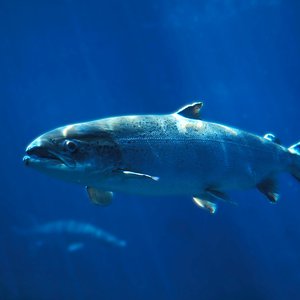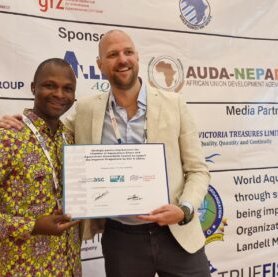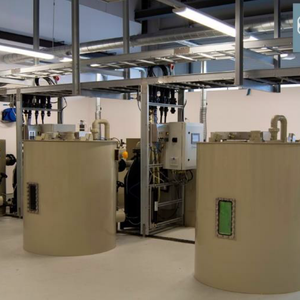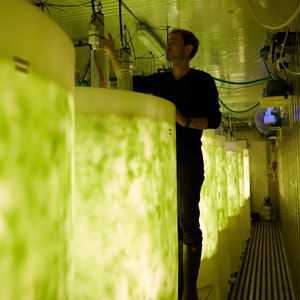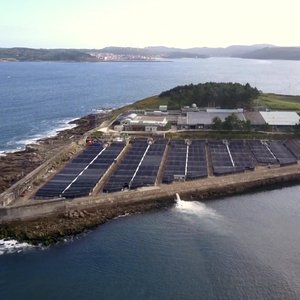In the past twenty-two years, Aqualande group carried out a ten-generation selective breeding program on rainbow trout, maintaining an unselected fish population to investigate the genetic gains in selected trout performance. INRAE, Aqualande group, and the French Poultry and Aquaculture Breeders Technical Center (SYSAAF) partnered to analyze data from the 20 years-breeding program and investigate the potential of combining genetics selection with new feed development.
Participating in the collaborative European research program AquaIMPACT, researchers have compared the growth, nutrition needs, and fillet lipid content of the breading program trout with those of the unselected trout population.
The results, published in Aquaculture Reports, show that farming selected trout reduces the environmental impacts of trout farming since selected fish need 17% to 20% less feed compared to the unselected trout, to achieve the same growth.
Researchers also developed a nutritional trial using a new feed based on INRAE research. The new feed was made without fish oil, fishmeal, or soy to limit non-European imports. This feed was produced with ingredients from France and Europe, such as potato protein and microalgae.
For 110 days, both selected and unselected trout were given this feed, while a control group was fed a standard commercial feed containing fishmeal and fish oil.
According to the results, the selected trout fed the new feed achieved similar growth performance showing that selective breeding and the new feed can be combined to increase aquaculture sustainability. Moreover, fillets from the selected trout showed higher lipid content which resulted in a final product with higher nutritional quality and better taste.
Finally, the study also analyzed the effect of the addition of microalgae to the new feed. Microalgae also enhanced the nutritional quality of the fillets, which contained just as many omega-3 as fillets from trout given the standard feed containing fish oil.
Reference:
Marc Vandeputte, Geneviève Corraze, Jérôme Doerflinger, Florian Enez, Frédéric Clota, Frédéric Terrier, Mathilde Horat, Laurence Larroquet, Vincent Petit, Pierrick Haffray, Sandrine Skiba-Cassy, Mathilde Dupont-Nivet. Realised genetic gains on growth, survival, feed conversion ratio, and quality traits after ten generations of multi-trait selection in rainbow trout Oncorhynchus mykiss, fed a standard diet or a “future” fish-free and soy-free diet. Aquaculture Reports Volume 27, December 2022, 101363. DOI : https://doi.org/10.1016/j.aqrep.2022.101363



